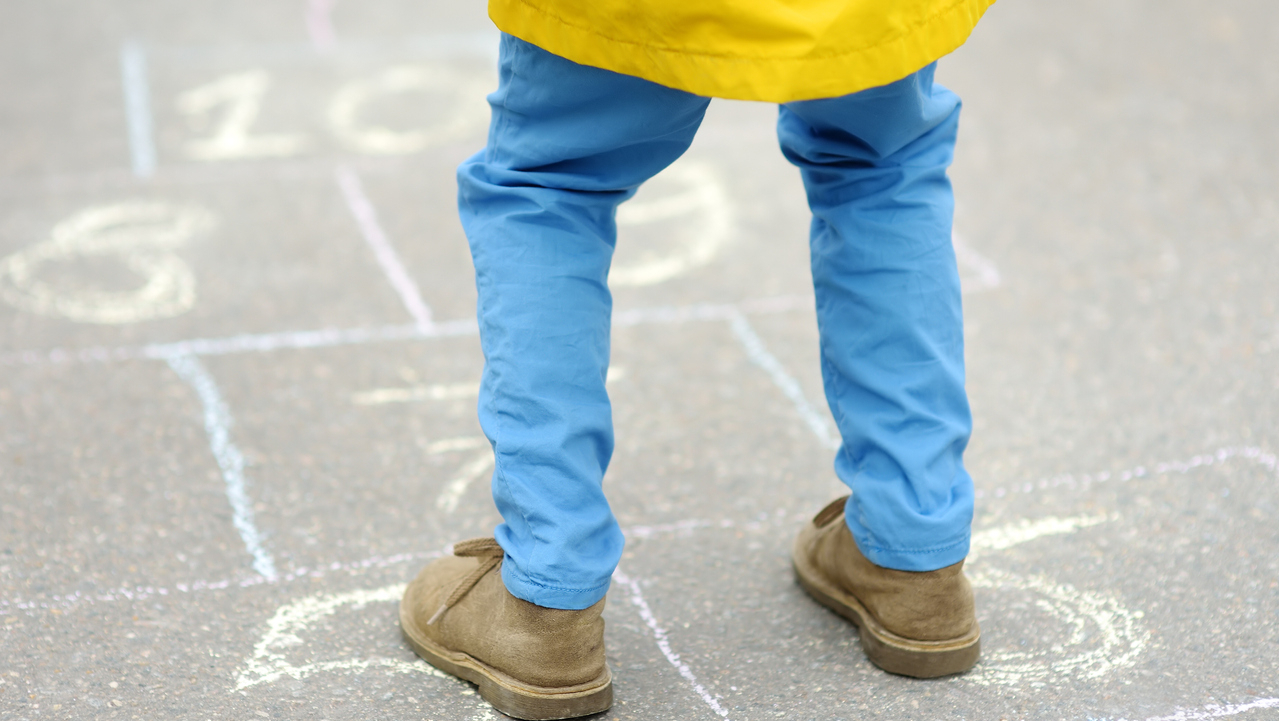6 Springtime Movement Activities
- Written by: Amber Reid, Alexis Webster, and Lynne Lafave

Spring is an energizing time of the year! The season represents growth and renewal accompanied by warmer weather. It is a great time to take advantage of the upswing in temperature and go outside. Movement is good for the brain, body, and spirit. Kids need to move and Canada’s 24-Hour Movement Guidelines for preschoolers recommend 180 minutes of physical activity per day.1 Physical activity supports social, cognitive, and motor skill development.2,3 Our six low-prep outdoor activities create opportunities that provide children and educators with fun ways to celebrate spring through movement.
Children still need a childhood with dirt, mud, puddles, trees, sticks and tadpoles. ~Brooke Hampton
Springtime Ideas
(1) Create A Fairy Garden
- Have the kids gather loose parts such as string, rocks, sticks, and other things you find in the play yard. If you want to plan ahead you can ask parents to donate items to create your fairy garden or corner. Use sticks to create ladders or bridges. Rocks can create pathways or coloured rocks can create streams and ponds. Children can get creative with their fair garden! Imagine tiny creatures coming to visit or enjoy the little village they have created.
(2) Giant Dice Movement
- This game requires a giant dice or adapt it with a traditional game spinner. Create a movement for each assigned number. e.g. 1 = touch your toes, 2 = hop on two feet, = hop on one foot, 4 = touch your knee to your elbow, 4 = twist side to side, 5 = run on the spot, 6 = touch your knee with the opposite hand. Have the children continue to do the movement until the next person rolls another number.
(3) Build an Obstacle Course
- Create an obstacle course using hula hoops, stumps, logs, ropes, and whatever else you have on hand. Make sure you demonstrate various hops, skips, and funny movements as you make your way through to the end of the course. Children love to watch and copy as you role model active play!
Tip: Scheduling multiple outdoor playtime sessions can help preschoolers get heart-pumping physical activity throughout the day.4
(4) Insects, Bugs, and Creepy Crawly Outdoor Yoga
- Find a space in the sunshine and have an outdoor yoga class! You can bring mats or just enjoy the grass. Feel free to create your own poses and get everyone moving - spider, ladybug, earthworm poses are all free for the imagination.
Chalk-Based Games
(5) Mazes
- The possibilities are endless if you have some chalk and a sidewalk. Create a maze that the children need to move through. Striped areas could mean hopping, polka dots could mean getting down low while they move and blank areas could mean tiptoe walking.
(6) Squashing Bugs
- Draw a number of bugs with a letter of the alphabet inside of them. When you say a letter, the children hop on and squish that bug! This reinforces letter recognition while they are getting their bodies moving.
Enjoy your time outside!
References
-
Canadian Society for Exercise Physiology. (n.d.). Canada’s 24-Hour Movement Guidelines for the Early Years (0-4): An Integration of Physical Activity, Sedentary Behaviour and Sleep. https://csepguidelines.ca/early-years-0-4/
-
Tandon, P. S., Tovar, A., Jayasuriya, A. T., Welker, E., Schober, D. J., Copeland, K., Dev, D. A., Murriel, A. L., Amso, D., & Ward, D. S. (2016). The relationship between physical activity and diet and young children’s cognitive development: A systematic review. Prev Med Rep., 3, 379–90. https://doi.org/10.1016/j.pmedr.2016.04.003
-
Logan, S. W., Kipling Webster, E., Getchell, N., Pfeiffer, K. A., & Robinson, L. E. (2015). Relationship between fundamental motor skill competence and physical activity during childhood and adolescence: A systematic review. Kinesiol Rev., 4(4), 416–26. https://doi.org/10.1123/kr.2013-0012
-
Razak, L. A., Yoong, S. L., Wiggers, J., Morgan, P. J., Jones, J., Finch, M., Sutherland, R., Lecathelnais, C., Gillham, K., Clinton-McHarg, T., et al. (2018). Impact of scheduling multiple outdoor free-play periods in childcare on child moderate-to-vigorous physical activity: A cluster randomised trial. Int J Behav Nutr Phys Act., 15, 34. https://doi.org/10.1186/s12966-018-0665-5